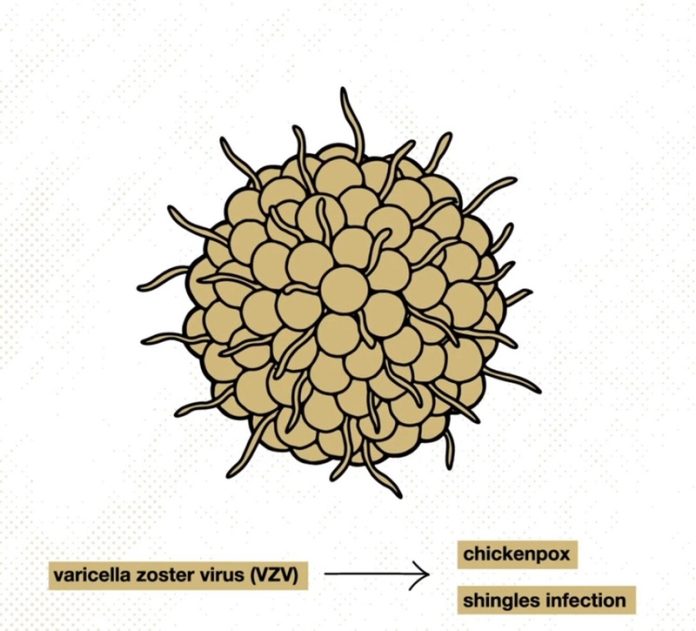
Scientists at the University of Colorado Anschutz Medical Campus have found a new way the varicella zoster virus (VZV), which causes chickenpox and shingles, spreads in the body.
This discovery could lead to new treatments for these diseases.
Published in the Journal of Virology, the study focused on a single viral protein called IE62.
Using human neurons and rodent models, the researchers found that IE62 can travel throughout the body inside tiny structures called small extracellular vesicles (sEVs).
These sEVs allow the protein to reach cells far from the initial infection site, where it can then shut down the cells’ antiviral defenses, making it easier for the virus to spread.
VZV is a very common virus, present in 95% of people. It first causes chickenpox, which then goes dormant in the body. Under stress, aging, or other factors, the virus can reactivate and cause shingles.
Shingles is a painful skin disease that can also affect the central nervous system, potentially leading to conditions like stroke, dementia, and vascular disease.
For the virus to spread quickly, it needs to avoid the immune system. This study is the first to show how the virus uses the infected cells’ sEV machinery to do this.
“This is the first time we’ve found a mechanism that allows this virus to reach distant organs from the original infection site,” said Christy Niemeyer, Ph.D., the study’s first author and assistant professor of neurology at the University of Colorado School of Medicine. “These vesicles shut down the immune response.”
Andrew Bubak, Ph.D., the study’s senior author and assistant professor of neurology at the CU School of Medicine, explained that the protein IE62 stops the antiviral response in cells much sooner than previously known.
“We believe this protein is packaged into sEVs and sent down the neurons to the skin, making the skin cells vulnerable to infection,” Bubak said. “This probably happens before the rash appears, which is very interesting for developing new treatments.”
While there is a vaccine for shingles, there are no drugs that target the activity of this protein. This study could change that.
“This is the first time we’ve identified a new antiviral target that could lead to new treatments,” Niemeyer said.
Bubak noted that this mechanism might explain the common co-infections and immune system issues seen in people with VZV. He also mentioned that the virus can reactivate without the classic shingles rash, which could mean these immune-suppressing events are more common than we thought.
“This discovery can help us understand how other viruses spread and cause infections,” he said.
Niemeyer agreed, emphasizing the importance of studying sEVs in viral spread and secondary disease development. “We need to better understand their role to reduce the complications caused by VZV infections,” she said.
If you care about wellness, please read studies about how ultra-processed foods and red meat influence your longevity, and why seafood may boost healthy aging.
For more health information, please see recent studies about the power of pickle juice ,and time-restricted eating: a simple way to fight aging and cancer.



